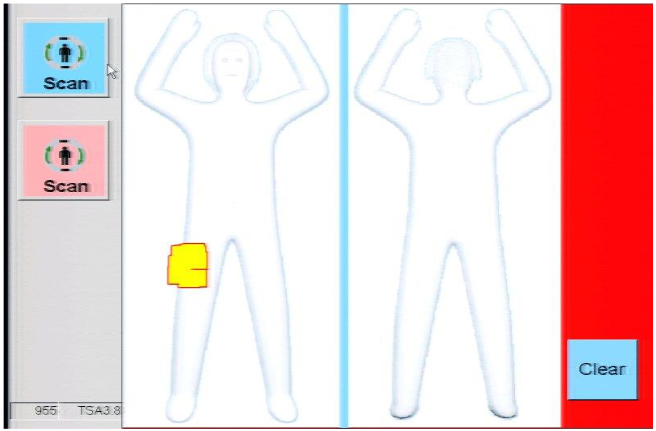The Centers for Medicare and Medicaid Services announced on December 3, 2015 that the agency was, at the behest of an outside petitioner, considering a new National Coverage Determination (NCD) for gender dysphoria and gender reassignment surgery. This NCD would replace the previous NCD from 1989, which categorically excluded coverage for “transsexual surgery” because it was “experimental” and “controversial,” based in part on Janice Raymond’s attack on transgender women, Transsexual Empire. This prior NCD was found to be invalid by the Department of Health and Human Service’s Departmental Appeals Board in May 2014.
This left a vacuum; transition-related care was no longer categorically excluded, but could be excluded by local coverage determinations. A new NCD would fill this void and hopefully ensure that regardless of where they live, Medicare and Medicaid beneficiaries will have access to any and all medically necessary transition-related care. To that end, I filed a comment clearly showing the weight of scientific support for transition-related care and reminding CMS that applicable statutes require such a NCD be issued. The scientific research list was developed from http://www.cakeworld.info/transsexualism/what-helps/hormones and http://www.cakeworld.info/transsexualism/what-helps/srs, which includes the abstracts from each of the papers.
On December 3, 2015, CMS initiated a review to determine whether health outcomes are improved from treatment for gender dysphoria and “gender reassignment surgery.” The overwhelming weight of scientific evidence indicate that treatments for gender dysphoria, up to and including gender affirming surgeries, improve health outcomes for transgender patients. More fundamentally, CMS does not have a choice in whether or not to cover treatments for gender dysphoria; prior coverage exclusions were based upon unlawful discrimination on the basis of sex, which the Affordable Care Act has reiterated is illegal.
The scientific evidence is easy to find, with studies routinely concluding that interventions such as hormone replacement therapy and gender affirming surgeries have benefits to transgender patients.
See, e.g.:
http://www.ncbi.nlm.nih.gov/pubmed/26237928
http://www.psycontent.com/content/y4016k965241600p/
http://link.springer.com/article/10.1007/s10508-014-0453-5
http://www.sciencedirect.com/science/article/pii/S1471015315000446
http://www.researchgate.net/publication/274833229_Psychosocial_outcome_and_quality_of_sexual_life_after_sex_reassignment_surgery_An_Italian_multicentric_study
http://link.springer.com/article/10.1007/s10508-014-0300-8
http://www.hindawi.com/journals/tswj/2014/281326/
http://europepmc.org/abstract/MED/24433562
http://www.europsy-journal.com/article/S0924-9338(14)77643-6/abstract
http://www.tandfonline.com/doi/full/10.1080/15532739.2014.890558#.U5HxsE2KAUE
http://www.ncbi.nlm.nih.gov/pubmed/24697986
http://europepmc.org/abstract/MED/24755998
http://downloads.hindawi.com/journals/tswj/2014/960745.pdf
http://www.osaka-med.ac.jp/deps/b-omc/articles/601/601hori.pdf
http://www.aerzteblatt.de/pdf/111/47/m795.pdf
http://www.jourpsyc.com/2014/703.pdf
http://www.emeraldinsight.com/doi/abs/10.1108/MHRJ-05-2014-0015
http://www.hindawi.com/journals/tswj/2014/437378/
http://link.springer.com/article/10.1007/s00129-013-3207-x
http://apps.who.int/iris/bitstream/10665/128119/1/WHO_HIV_2014.21_eng.pdf?ua=1
http://pediatrics.aappublications.org/content/early/2014/09/02/peds.2013-2958.abstract
http://www.ncbi.nlm.nih.gov/pubmed/23347389
https://www.thieme-connect.de/DOI/DOI?10.1055/s-0033-1343427
http://vts.uni-ulm.de/docs/2014/8926/vts_8926_13380.pdf
http://www.teni.ie/attachments/5bdd0cd5-16b6-4ab6-9ee6-a693b37fdbcf.PDF
http://europepmc.org/abstract/MED/23830266
http://www.ncbi.nlm.nih.gov/pubmed/22703571
http://www.ncbi.nlm.nih.gov/pubmed/21699661
http://www.ncbi.nlm.nih.gov/pubmed/21995738
http://www.tandfonline.com/doi/full/10.1080/15532739.2011.618399#.UsfaSU2A1hF
http://www.ncbi.nlm.nih.gov/pubmed/22051006
http://www.ncbi.nlm.nih.gov/pubmed/19816764
http://dare.ubvu.vu.nl/handle/1871/16287
http://onlinelibrary.wiley.com/doi/10.1111/j.1365-2265.2009.03625.x/abstract
https://www.thieme-connect.com/ejournals/abstract/10.1055/s-0030-1262718
http://link.springer.com/article/10.1007/s11136-010-9668-7
http://www.sciencedirect.com/science/article/pii/S1158136009000796
http://europepmc.org/abstract/MED/19619147/
http://www.ncbi.nlm.nih.gov/pubmed/19330439
http://edoc.ub.uni-muenchen.de/9984/
http://www.ncbi.nlm.nih.gov/pubmed/19473463
http://europepmc.org/abstract/MED/20092545
http://www.ncbi.nlm.nih.gov/pubmed/18033979
http://www.ncbi.nlm.nih.gov/pubmed/19062760
http://www.ncbi.nlm.nih.gov/pubmed/17669144
http://www.tandfonline.com/doi/abs/10.1080/10532528.2007.10559851#.UsCcs02A1EY
http://link.springer.com/article/10.1007/s10508-006-9074-y
http://www.sciencedirect.com/science/article/pii/S1158136006000491
http://www.ncbi.nlm.nih.gov/pubmed/16645675
http://www.ncbi.nlm.nih.gov/pubmed/16437228
http://onlinelibrary.wiley.com/doi/10.1046/j.1365-2265.2003.01821.x/pdf
http://link.springer.com/article/10.1023/A:1024086814364
http://www.publish.csiro.au/?paper=PY02039
http://dspace.library.uu.nl/handle/1874/429
http://www.europsy-journal.com/article/S0924-9338(02)00703-4/abstract
http://www.ncbi.nlm.nih.gov/pubmed/11521334
http://onlinelibrary.wiley.com/doi/10.1046/j.1464-410X.2001.02323.x/full
http://www.ncbi.nlm.nih.gov/pubmed/11758101
http://connection.ebscohost.com/c/articles/24616146/outcomes-treatment-gender-dysphoria
http://europepmc.org/abstract/MED/9453923
http://www.psy-journal.com/article/S0165-1781(15)00005-0/abstract
http://journals.lww.com/co-psychiatry/Citation/2015/11000/Gender_dysphoria_in_children_and_adolescents___a.6.aspx
http://www.ncbi.nlm.nih.gov/pubmed/24972423
http://europepmc.org/abstract/MED/24330520
http://europepmc.org/abstract/MED/24493653
http://onlinelibrary.wiley.com/doi/10.1111/jsm.12363/abstract
http://www.tandfonline.com/doi/abs/10.1080/.U2unFvldV8F#.U521Lk2KAUE
http://onlinelibrary.wiley.com/doi/10.1111/jsm.12698/abstract
http://www.ncbi.nlm.nih.gov/pubmed/24972388
http://onlinelibrary.wiley.com/doi/10.1002/phar.1487/abstract
http://link.springer.com/article/10.1007/s40618-014-0077-6
http://www.tandfonline.com/doi/abs/10.1080/15532739.2014.899174#.U-9OYU0cQUF
https://endo.confex.com/endo/2014endo/webprogram/Paper14354.html
http://www.ncbi.nlm.nih.gov/pubmed/25401972
http://www.ncbi.nlm.nih.gov/pubmed/25111431
http://www.ncbi.nlm.nih.gov/pubmed/24972421
http://www.tandfonline.com/doi/abs/10.1080/19359705.2014.960990#.VF8-QU10wUE
http://www.ncbi.nlm.nih.gov/pubmed/24275005/
http://www.ncbi.nlm.nih.gov/pubmed/23470169
http://link.springer.com/article/10.1007/s11136-013-0497-3
http://europepmc.org/abstract/MED/23512380
http://www.ncbi.nlm.nih.gov/pubmed/24177489/
http://www.ncbi.nlm.nih.gov/pubmed/23574768/
http://www.ncbi.nlm.nih.gov/pubmed/22455322
http://www.psyneuen-journal.com/article/S0306-4530(11)00262-9/abstract
http://onlinelibrary.wiley.com/doi/10.1111/j.1743-6109.2011.02564.x/abstract
http://www.ncbi.nlm.nih.gov/pubmed/20646177/
http://www.tandfonline.com/doi/abs/10.1080/19359705.2011.581195#.UsCbyU2A1hE
http://sex.sagepub.com/content/10/1/101.short
Frankly, in light of the weight of scientific evidence, failing to issue a national coverage determination for treatments of gender dysphoria would be an arbitrary and capricious abuse of agency discretion.
Failing to issue a national coverage determination would also violate 42 U.S.C. § 18116 (§1557 of the Affordable Care Act). The section covers CMS activities as an Executive Branch agency, and prohibits discrimination on the basis of sex in health programs or activities such as a national coverage determination. This prohibition has correctly been construed as including discrimination on the basis of gender identity. Rumble v. Fairview Health Services, 2015 WL 1197415 (D. Minn. Mar. 16, 2015), available at https://www.gpo.gov/fdsys/pkg/USCOURTS-mnd-0_14-cv-02037/pdf/USCOURTS-mnd-0_14-cv-02037-0.pdf.
CMS’s previous denial of coverage for gender dysphoria was based upon animus towards transgender people and bigoted views towards treatment options for gender dysphoria, deciding against coverage in part because treatment for transgender people was “controversial.” The 1981 memorandum justifying the prior national coverage determination, now rescinded as invalid by the Departmental Appeals Board, relied heavily upon the book Transsexual Empire: The Making of the She-Male by Janice Raymond. The book is well known as an anti-transgender screed (for instance, Ms. Raymond describes the mere existence of transgender women as a rape of cisgender women’s bodies).
CMS has an obligation to correct its past bigotry. Failing to remedy CMS’s history of discrimination towards transgender people with a new national coverage determination would continue unlawful discrimination against transgender people on the basis of their gender identity. Accordingly, CMS must issue a new national coverage determination, including coverage for all medically necessary transition-related care.
